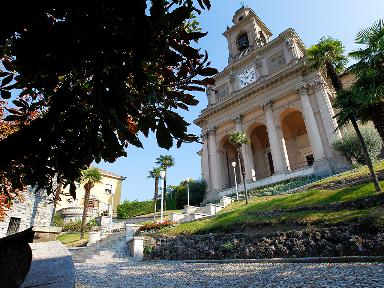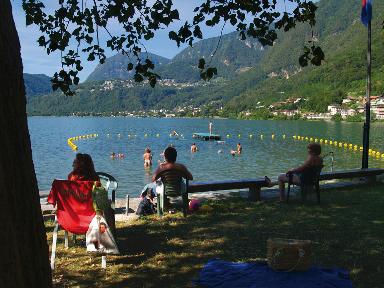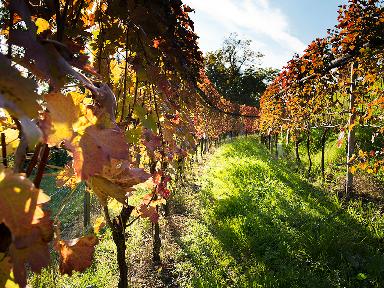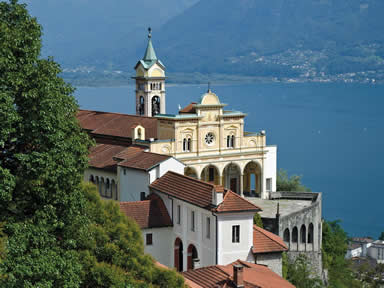
A pleasant avenue leads up to the church with its red façade and mosaic depicting St. Francis of Assisi by a local artist, Gino Macconi (1967).
The church has just one nave and a barrel vault roof painted in the Neo-Gothic style by Angelo Sala (1870). The front of the nave contains several paintings from the 16th century, including (on the right) one of San Felice da Cantalice (1637) with a fine natural landscape in greys and browns, while on the left is a painting of Sant’Antonio da Padova (1655) by Francesco Torriani, quite remarkable for its warm golden colours.
The first chapel on the right has a Late Baroque wooden altar with a statue of the Madonna crushing the devil underfoot.
Several artistic styles are used for the main altar. The temple-shaped ciborium is Late Baroque, while the simple Neoclassical altar stone was added in the 19th century. The altarpiece dates back to the 17th century and is a copy by Giovan Battista Crespi (“il Cerano”) depicting the crucifix with St. Francis and St. Carlo Borromeo in postures of passion typical of the intense devotion during the Counter-Reformation.
The choir (built in the 18th century) features several paintings of saints and Capuchin friars (17th-19th centuries), rescued from the monastery.



